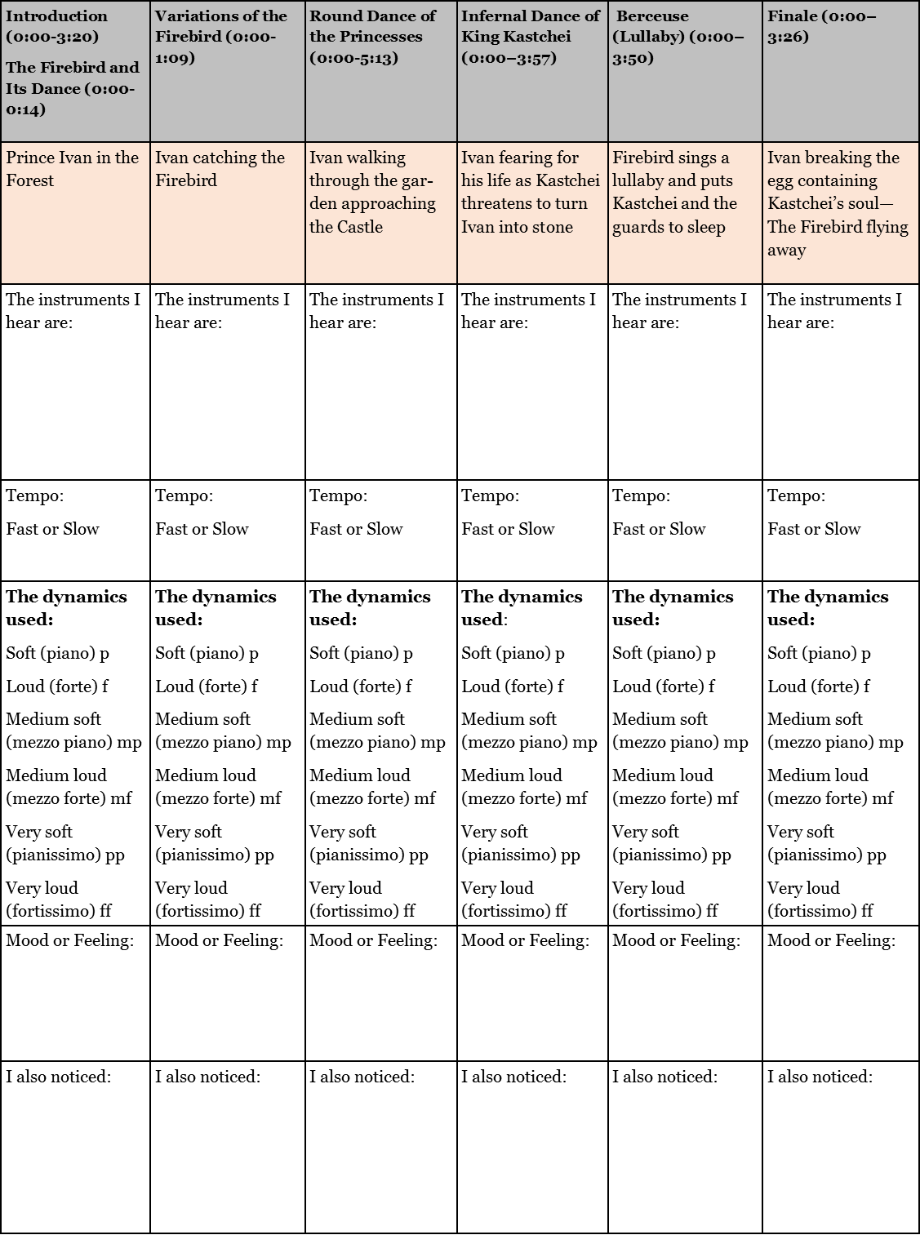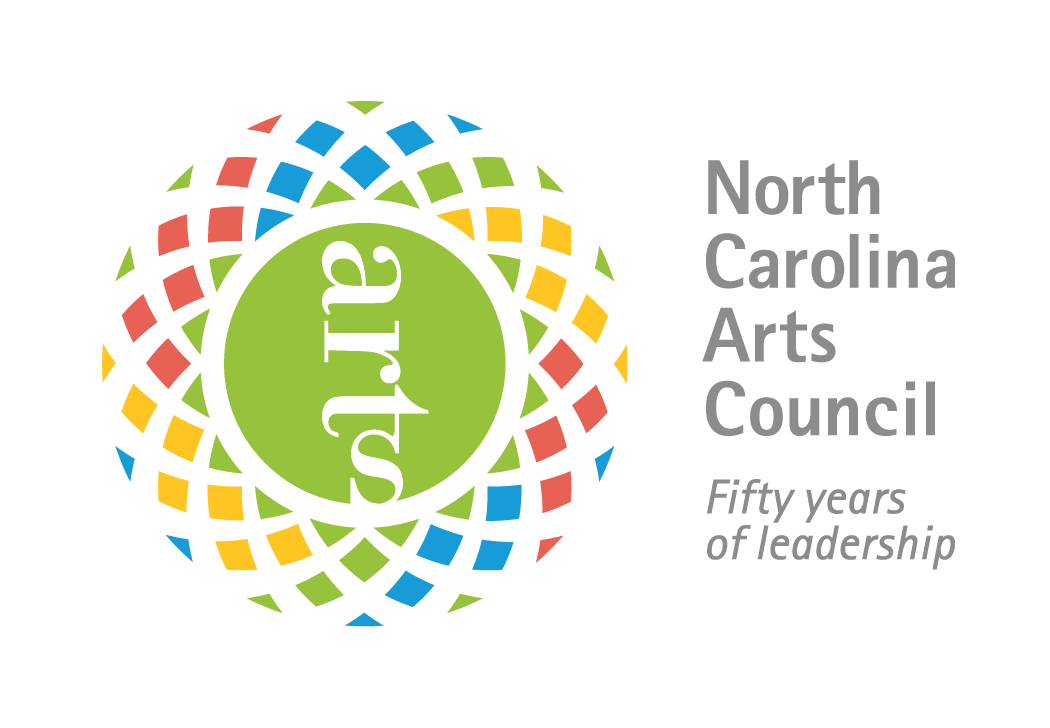STRAVINSKY | Firebird Suite

IGOR STRAVINSKY
Born in Oranienbaum, Russia 1882
Died in New York, New York 1971
The Firebird Suite
Composed in 1919
The son of a leading bass at the Mariinsky Theatre in St. Petersburg, Stravinsky began piano lessons at age 9. Although his father was a singer, his parents wanted their son to become a lawyer and not a musician. For this reason, Stravinsky studied law for several semesters at the University of St. Petersburg. However, he also continued his music studies, which included composition lessons with the famous Russian composer Nickolai Rimsky-Korsakov.
Upon graduation from college, Stravinsky married Katerina Nossenko and embarked upon a career in music instead of one in law. In 1908, his first symphony was performed. This came to the attention of Sergei Diaghilev, the director of the Ballet Russe, who commissioned Stravinsky to compose a ballet for his theatre. That ballet ended up being the famous L'Oiseau de Feu (The Firebird)
Stravinsky left Russia for the first time in 1911, going to Paris to attend the premiere of The Firebird. During his stay in the city, he composed three major works for the Ballets Russe--L'Oiseau de Feu, Petroushka, and Le Sacre du printemps (The Rite of Spring). In 1913, the premiere of The Rite of Spring nearly caused a riot in the concert hall. The work was very different from what concert audiences at that time were used to hearing; many of them didn't even consider it to be music.
Because of World War I and the October Revolution in Russia, Stravinsky moved to Switzerland in 1914. He moved back to Paris in 1919 and continued composing for the Ballet Russe; even becoming a French citizen. He would not return to his home country of Russia for over 40 years.

Stravinsky displayed an inexhaustible desire to learn and explore art, literature, and life. This desire manifested itself in several of his Paris collaborations. Not only was he the principal composer for the Ballet Russes, but Stravinsky also collaborated with Pablo Picasso (Pulcinella, 1920), Jean Cocteau (Oedipus Rex, 1927) and George Balanchine (Apollon Musagete, 1928).
Due to the war in Europe and the death of his first wife, Katerina, in 1939, Stravinsky moved from France to Massachusetts. Their marriage had endured for 33 years, but the true love of his life, and partner until his death, was his second wife Vera de Bosset, whom he married in New York in 1940. In 1945, Stravinsky moved to California where he would live the rest of his life. To celebrate his new citizenship, he wrote an orchestral arrangement of The Star Spangled Banner.
Stravinsky had adapted to life in France, but moving to America aged 58 was a very different prospect. For a time he preserved a ring of immigrant Russian friends and contacts, but eventually realized that this would not sustain his intellectual and professional life in the USA. When he planned to write an opera with W. H. Auden, the need to acquire more familiarity with the English-speaking world coincided with his meeting the conductor and musicologist Robert Craft. Craft lived with Stravinsky until his death, acting as interpreter, chronicler, assistant conductor and factotum for countless musical and social tasks.
After moving to California, Stravinsky began taking commissions from various different sources, including the Ringling Brothers Circus, a jazz band, and an opera company. He continued to write ballets, and he also unsuccessfully wrote scores for films. In 1962 he accepted an invitation to return to Russia for the first time since 1919 for a series of well-received concerts.
Stravinsky was very neat, meticulous, and precise. These traits were apparent in his musical scores which were extremely well crafted and carefully written. Most people who knew him through dealings connected with performances spoke of him as polite, courteous and helpful. At the same time, however, he had a disregard of his social inferiors. Robert Craft was embarrassed by his habit of tapping a glass with a fork and loudly demanding attention in restaurants. He also ignored the opinions, advice, and suggestions of others regarding his music, and did not seem to care whether or not critics (or audiences) liked his music.
He died in New York City on April 6, 1971 at the age of 89 and was buried in Venice on the cemetery island of San Michele. His grave is close to the tomb of his early collaborator Diaghilev. Stravinsky's life had encompassed most of the 20th Century, including many of its modern classical music styles, and he influenced composers both during and after his lifetime. He has a Star on the Hollywood Walk of Fame at 6340 Hollywood Boulevard.
The Firebird
In 1909, when Stravinsky was 27, he was commissioned by Sergei Diaghilev to write a ballet based on the Russian legend, the Firebird. The work was completed in 1910 and premiered at the Paris Opera. Stravinsky attended the rehearsals, and actively helped in the preparation of the production. The ballet turned out to be a huge success and marked a major step in his career. The ballet was first performed in the United States in 1944 with costumes and sets designed by the famous artist Marc Chagall.
The melodies of The Firebird are influenced by Russian folk songs. The ballet is a succession of five dances. The movement, Berceuse (or Lullaby) and Finale is the last dance.
Story of the Firebird- Synopsis
 Prince Ivan appears in the king's garden pursuing the Firebird. The Firebird dances while plucking golden apples from a magic tree in the garden. Suddenly, the dance breaks off when the prince catches her. They struggle, and the Firebird gives in to the prince. The Firebird offers a feather to the prince as a pledge that she will help him if he were ever to need it. He accepts it, and she flies off. Soon, 13 captive princesses of the king appear in the garden playing a game with the golden apples. The prince appears, and the princesses dance with him. However, the prince becomes enchanted with the leader of the princesses- the one who is to be his bride. In a panic, the princesses scurry back to the king's castle so as not to arouse his anger for their being late. The prince decides to rescue his bride and free the captive princesses. So Ivan goes to the castle, opens the gates and attempts to start the rescue. The king is so infuriated that he begins to cast a spell which would turn Ivan to stone. But Ivan remembers his magic feather from the Firebird. No sooner does he wave it above his head that the king's spell is rendered powerless by the appearance and the magic of the Firebird. Ivan and the princess may. The Firebird leaves with a feeling of hope and joy.
Prince Ivan appears in the king's garden pursuing the Firebird. The Firebird dances while plucking golden apples from a magic tree in the garden. Suddenly, the dance breaks off when the prince catches her. They struggle, and the Firebird gives in to the prince. The Firebird offers a feather to the prince as a pledge that she will help him if he were ever to need it. He accepts it, and she flies off. Soon, 13 captive princesses of the king appear in the garden playing a game with the golden apples. The prince appears, and the princesses dance with him. However, the prince becomes enchanted with the leader of the princesses- the one who is to be his bride. In a panic, the princesses scurry back to the king's castle so as not to arouse his anger for their being late. The prince decides to rescue his bride and free the captive princesses. So Ivan goes to the castle, opens the gates and attempts to start the rescue. The king is so infuriated that he begins to cast a spell which would turn Ivan to stone. But Ivan remembers his magic feather from the Firebird. No sooner does he wave it above his head that the king's spell is rendered powerless by the appearance and the magic of the Firebird. Ivan and the princess may. The Firebird leaves with a feeling of hope and joy.
The Phoenix
Like the Firebird, the phoenix is a bird with beautiful gold and red plumage. At the end of its life-cycle the phoenix builds itself a nest of cinnamon twigs that it then ignites; both nest and bird burn fiercely and are reduced to ashes, from which a new, young phoenix arises. The new phoenix is destined to live, usually, as long as the old one, and continue the cycle. Due to this, the Phoenix has become a symbol of rebirth.
Leitmotif
Another way a composer can use melody is through leitmotifs. A leitmotif is a recurring musical theme that is associated within a particular piece of music with a particular person, place or idea. Although usually a short melody, it can also be a chord progression or even a simple rhythm. Leitmotifs can help to bind the work together into a coherent whole, and also enable the composer to relate a story without the use of words, or to add an extra level to an already present story.
Carl Maria von Weber was the first composer to make extensive use of leitmotifs. The first use of the word "leitmotif" in print was used while describing Weber's work. Beethoven also employed leitmotifs. For example, in his Fifth Symphony, a particular melody is said to be representative of "fate", after a critic famously described the recurring musical phrase as "The sound of fate knocking on the door". It is Richard Wagner, however, who is the composer most often associated with leitmotifs, and his operas make liberal use of them.
Leitmotifs are very common in movie scores; a well known example is the Star Wars Imperial March associated with Darth Vader in the Star Wars series of films composed by John Williams. John Williams also uses leitmotifs in his film scores forc for Jaws, the Indiana Jones films, the Superman films, E.T. the Extra-Terrestrial and Schindler's List. The work of Howard Shore in his The Lord of the Rings scores includes extensive use of leitmotifs which occur throughout the length of the three films. The themes represent different characters, cultures, and places.
 The music within Andrew Lloyd Webber's The Phantom of the Opera contains leitmotifs for some of its characters. The most popular example is likely the powerful pipe organ chord progression for the Phantom himself.
The music within Andrew Lloyd Webber's The Phantom of the Opera contains leitmotifs for some of its characters. The most popular example is likely the powerful pipe organ chord progression for the Phantom himself.
In visual arts an example of leitmotif can be seen in the works of M.C. Escher, which are featured throughout this guide. He repeats an image and changes one subtle thing each time. There are always links between the transformations and a goal in mind for the variations. In music it may help to convey a story; in Escher it may be the final overall image, which is a tessellation, i.e., a pattern repeated across a plane.
Stravinsky utilizes leitmotifs in Firebird to symbolize the different characters in the story. In order to make the melody fit the surroundings and meaning of the story throughout the entire ballet, he alters it in subtle ways by varying the accompanying music.
Storytelling & Listening Map:
Use the Playlist linked below with the downloadable listening map. The first time your students listen, you can speak the story that correlates with the track. The second time listening is when your students can observe what they hear and complete their listening map.
Downloadable Listening Map
Firebird Suite Youtube Playlist
Each excerpt is linked individually below
Play Introduction and The Firebird and its Dance:
"Once upon a time, a long time ago in a faraway kingdom, there was a prince named Ivan. One night, Ivan was out hunting. It was an extremely dark night and though there was no moon in the sky, millions of stars shone brightly enough for him to find his way. The forest was full of creatures. A soft wind made the trees shake and the leaves rustled against each other. The prince went silently in search of his prey, and in the middle of the dark forest, he came upon a bird that he had never seen before. The Firebird, as it was called, had feathers of brilliant colors and eyes that were like crystals. The Firebird was eating golden apples from a silver tree. The prince was amazed by this beautiful creature, and so he slowly, silently crept closer and closer to the Firebird."
Play Variations of the Firebird:
"When the prince was sure the Firebird had not heard him, he lunged at her! The prince captured the Firebird. The Firebird flapped her strong, broad wings and, using every bit of strength in her body, struggled to reach the freedom of the sky. Finally, exhausted and realizing that she could not escape, the magical bird spoke to Prince Ivan and suggested a deal: If Ivan agreed to let her go, she would give the prince one of her magical feathers. This feather would protect Ivan from danger. If Ivan ever needed help, all he had to do was call for the Firebird, and she promised that she would come to his rescue. Ivan agreed to this deal and released the Firebird. Once free, the Firebird removed a single, shining feather and gave it to Ivan. She thanked Ivan for releasing her and stretched her wings and flew away into the night."
Play Round Dance of the Princesses:
"Later that same night, Ivan came upon a group of twelve maidens dancing and playing games in front of a dark, enchanted castle. They warned Ivan that they were being held captive by the evil sorcerer, Kastchei, and if caught, Kastchei would turn the prince into stone.
Play Infernal Dance of King Kastchei:
"Shortly after the maidens left, the guards who protected Kastchei appeared, followed by Kastchei, himself. The sorcerer was furious that Ivan had invaded his kingdom and ordered the guards to arrest Ivan at once! Prince Ivan tried to escape, but was captured and brought to the sorcerer. Even though he was terrified, Prince Ivan remembered the Firebird's promise. As Kastchei's guards held him tight, Ivan was able to reach for the single feather. Just as the sorcerer was about to turn him to stone, Ivan waved the feather and the Firebird instantly appeared. The magical bird put a spell on Kastchei and his guards, causing them to dance a wild and furious dance. They danced faster and faster, until exhausted, they fell down - sound asleep!"
Play Berceuse (Lullaby):
"As Kastchei and his servants slept, the Firebird sang a haunting melody. It was a lullaby that kept them under her spell. While they slept, the bird told Ivan the secret to the sorcerer's power. It was kept inside a large egg, hidden inside a wooden crate in the castle. If Ivan wanted to rescue the princesses and banish Kastchei and his guards, he would need to find and destroy the egg!"
Play Finale:
"Prince Ivan set out in search of the crate that held the egg. After hours of searching, Ivan discovered it and pried open the lid. Inside, he saw the large egg! Prince Ivan grabbed the egg, raised it above his head and threw it at the sleeping sorcerer. With a crack, the egg broke. There was a bright flash of light and Kastchei, his guards and his castle instantly disappeared. Ivan thanked the Firebird for her help. Without her feather and the promise she made, he would have been turned into stone. Once again, the Firebird flapped her brilliant wings and lifted off into the sky. Prince Ivan, the twelve maidens, and the rest of the kingdom began to celebrate in joy. The End!"
Teacher tip: You may need to stop the music after each track in order for students to have some space to think about their answers.







